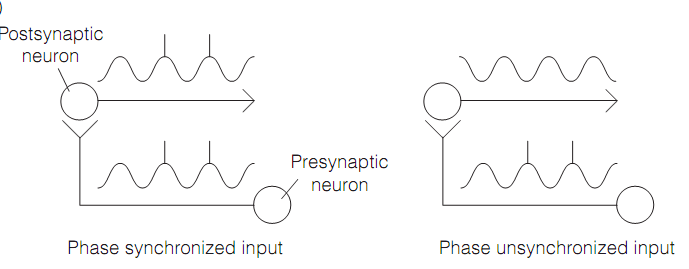Brain oscillations
In numerous brain areas, particularly the cerebral cortex and thalamus, neurons display regular oscillations in the membrane potential. These can be big adequate to cause the rhythmic fluctuations in firing rate which drive modifications in synaptic activity. The oscillations arise from the intrinsic pacemaker properties of separate neurons, or arise by feedback via GABAergic inhibitory interneurons, expalained as hub neurons since of their widespread connectivity. The oscillations are synchronized more than big populations of neurons and the modificatios in potential are consequently large adequate to be recorded through scalp electrodes or by electrodes implanted into the cortex of behaving animals. The oscillations take place over numerous characteristic frequency ranges which tend to be related with specific behavioral states which are shown in table below. However there are important species and developmental differences. For illustration, theta frequencies, whereas prominent in rats engaged in moving and exploring are not recorded frequently in primates; delta activity is generally seen in deep sleep in adult humans, but is seen in young children whenever awake.

The Neural oscillations are created in a wide range of ways. Those related with wakefulness (example, alpha) are recognized by reciprocal the connections among the thalamus and the cortex. With the onset of sleep, modifications in thalamic neurons outcomes in altered connectivity with the cortical neurons that consequently switch into the oscillations of a various frequency (delta). In rats theta rhythms are seen predominantly in the hippocampus where they are significant in spatial learning. The Hippocampal neurons need cholinergic excitatory input from the medial septum to display theta activity; however the intrinsic theta pacemaker lies with the hippocampal neurons.
A critical function of a neural oscillation is to modulate the output of a neuron depending on the associative timing or synchrony among presynaptic and postsynaptic neuron. A neuron is more probable to fire if an input coincides with the depolarizing phase of its neural oscillation than its hyperpolarizing phase which is shown in figure below. This mechanism is significant in synchronizing the output of neurons and this is considered to be included in perception, attention, and in the memory.

Figure: Brain oscillations modulate firing